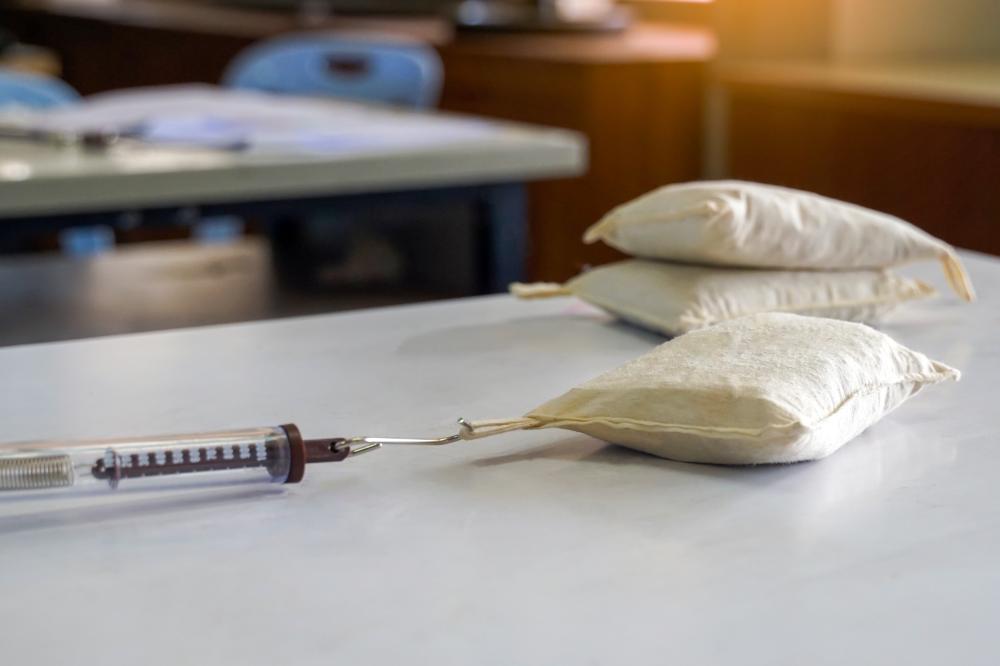
An Overview of Heroin Addiction Treatment
Heroin addiction treatment is a multifaceted journey that involves a combination of medical interventions and behavioral therapies. At Solace Treatment Center, we have seen firsthand the power of combining evidence-based practices with compassionate care. This dual approach not only aids in detoxification but also supports long-term recovery. Our 20+ years of experience underscore the importance of personalized treatment plans tailored to individual needs.
The backbone of successful heroin addiction treatment lies in integrating pharmacological and therapeutic methods. It’s not just about ending the physical dependency but also about addressing the psychological aspects of addiction. Patients benefit most when both dimensions are tackled simultaneously, creating a more robust path to sobriety.
Pharmacological Approaches to Treatment
Pharmacological treatments are critical in managing withdrawal symptoms and reducing cravings in heroin addiction treatment. These medications offer a safer alternative to the addictive properties of heroin and play a pivotal role in the path to recovery.
- Methadone: A long-acting opioid agonist that has been employed for over half a century. It is administered in regulated settings to minimize withdrawal and curb cravings.
- Buprenorphine: Acting as a partial opioid agonist, it offers relief from cravings without producing a high, thus allowing patients to engage more fully in therapy.
- Naltrexone: This medication blocks the euphoric effects of heroin, providing a significant deterrent to relapse. It requires the patient to be opioid-free before initiation, making compliance a hurdle.
Our experience at Solace Treatment Center showcases that medication is most effective when combined with therapeutic support, acting as a foundation upon which patients can rebuild their lives.
Behavioral Therapies in Heroin Addiction Treatment
Behavioral therapies are indispensable within heroin addiction treatment, providing the tools necessary for lasting recovery. At our center, therapies like cognitive-behavioral therapy (CBT) and contingency management are staples in our programs.
CBT helps patients recognize and challenge distorted thinking patterns while developing problem-solving skills. By addressing these cognitive distortions, patients can better manage stressors and reduce relapse risks. Meanwhile, contingency management uses motivational incentives to reward healthy choices, reinforcing sobriety.
Group therapy sessions also play a vital role, fostering a sense of community among clients. Through shared experiences, individuals find support and encouragement from peers on similar journeys. This peer connection can significantly enhance the therapeutic process, making recovery a shared goal.
What Is the Typical Process for Heroin Addiction Treatment?
The typical process for heroin addiction treatment involves several key steps to ensure a comprehensive and personalized recovery journey.
- Assessment: A thorough evaluation to understand the individual’s unique needs and the extent of their addiction.
- Detoxification: Managed by medical professionals, detox helps to safely clear heroin from the body, reducing withdrawal symptoms.
- Medication: Initiation of pharmacological treatments to stabilize the patient’s condition and reduce cravings.
- Therapy: Engagement in individualized and group therapies to address psychological components of addiction.
- Aftercare: Planning for sustained recovery through support groups, ongoing therapy, and community involvement.
Each stage is designed to support the individual comprehensively, ensuring they have the tools needed for long-term sobriety and personal growth.
Personal Insights from Solace Treatment Center
Through decades of working in heroin addiction treatment, certain truths become evident. One of the most profound insights is the resilience of the human spirit. We have witnessed clients overcome immense obstacles, a testament to their strength and the effectiveness of tailored treatment plans.
Another key insight is the role of family and community support. Recovery often extends beyond the individual, involving a network of loved ones who play a crucial part in the healing process. At Solace Treatment Center, we encourage family involvement because we know it enhances outcomes.
Finally, we emphasize the importance of flexibility in treatment. Recovery is not a linear journey but rather a series of steps forward and backward. An adaptable approach allows us to meet the client where they are, continually adjusting to their evolving needs.
What Qualifies as a Heroin Addiction Treatment Emergency?
An emergency in heroin addiction treatment typically refers to an acute situation where a person’s life is in danger due to overdose or severe withdrawal symptoms. Immediate medical intervention is critical in these cases.
Recognizing the signs of overdose, such as unconsciousness, slowed breathing, or cyanosis, is crucial. In such instances, administering Naloxone can be life-saving. Similarly, severe withdrawal can cause complications that require urgent care. At Solace Treatment Center, we train our clients and their families to act swiftly during these emergencies, ensuring safety and timely assistance.
What are the primary components of heroin addiction treatment and why is a multifaceted approach important?
Heroin addiction treatment is best approached from a multi-pronged angle, integrating both pharmacological and behavioral therapies. The physical and psychological dependencies associated with heroin use mean that treatment must address both areas comprehensively. Medications like Methadone, Buprenorphine, and Naltrexone manage withdrawal symptoms and cravings, creating a stable foundation for recovery. Concurrently, behavioral therapies such as cognitive-behavioral therapy (CBT) and group sessions help address the psychological aspects, equipping clients with tools to manage triggers and prevent relapse. At Solace Treatment Center, we’ve observed that tailoring this dual approach to individual needs significantly increases the likelihood of long-term recovery. This comprehensive method not only helps in breaking the cycle of addiction but also fosters personal growth and resilience.
How do pharmacological treatments assist in the recovery process from heroin addiction?
Pharmacological treatments play a crucial role in managing heroin addiction by alleviating withdrawal symptoms and reducing cravings. Medications such as Methadone, a long-acting opioid agonist, and Buprenorphine, a partial agonist, help stabilize patients, facilitating their participation in therapeutic interventions. Naltrexone, which blocks the euphoric effects of heroin, acts as a powerful deterrent against relapse once the patient is opioid-free. At Solace Treatment Center, we have witnessed these medications forming a cornerstone of successful recovery journeys when combined with counseling and supportive care. By reducing the physiological grip of addiction, clients are better positioned to engage with therapy and life skill development, crucial steps in building a sustainable, sober lifestyle.
What role do behavioral therapies play in the treatment of heroin addiction?
Behavioral therapies are instrumental in treating heroin addiction by addressing the underlying psychological triggers and thought patterns that accompany substance abuse. Cognitive-behavioral therapy (CBT) helps clients understand and reframe distorted thinking, thereby reducing the risk of relapse. At Solace Treatment Center, we integrate CBT with contingency management, which uses motivational incentives to promote sobriety. Group therapy also plays a vital role, offering a support network where individuals can share experiences and learn from one another. These interactions foster a sense of community and accountability, which are critical for sustained recovery. By providing clients with coping strategies and relapse prevention skills, behavioral therapies lay the groundwork for long-term success.
What is the typical process for heroin addiction treatment?
The typical heroin addiction treatment process involves several critical steps designed to support a comprehensive recovery journey. Initially, an assessment is performed to understand the individual’s unique needs and addiction severity. This is followed by detoxification, where professionals safely manage the withdrawal process. Once stabilized, medications are introduced to manage cravings and facilitate engagement in therapy. At Solace Treatment Center, individualized and group therapies address the psychological facets of addiction, providing coping strategies and fostering community support. The journey concludes with aftercare planning, which includes support groups and ongoing therapy to ensure long-term sobriety. This structured approach is essential in providing clients with the tools needed for a sustainable recovery.
Why is family involvement important in the recovery process from heroin addiction?
Family involvement is crucial in the recovery process from heroin addiction because it extends support beyond the individual, creating a nurturing environment conducive to healing. At Solace Treatment Center, we recognize that recovery is a collective journey that involves the client’s social circle. Family members often provide emotional support and encouragement, helping clients stay motivated and accountable. We encourage family therapy sessions to facilitate open communication and understanding, enabling families to mend relationships strained by addiction. This involvement enhances treatment outcomes and fosters a network of resilience that supports long-term recovery. By engaging families, we also help them develop strategies to manage their own concerns and support their loved one’s recovery effectively.
What qualifies as a heroin addiction treatment emergency, and how should it be handled?
A heroin addiction treatment emergency typically involves life-threatening situations such as overdose or severe withdrawal symptoms. Recognizing the signs of an overdose, like unconsciousness, slowed breathing, or cyanosis, is essential, as immediate medical intervention is critical. At Solace Treatment Center, we emphasize training our clients and their families in administering Naloxone, a life-saving medication that can reverse an overdose. Severe withdrawal symptoms also require urgent care to prevent complications. By preparing for these emergencies through education and awareness, we ensure safety and timely assistance for our clients. Considering how one might react in such situations is an excellent preparation strategy, inviting you to explore whether you are equipped to handle these circumstances effectively.
How can individuals access resources for heroin addiction treatment?
Accessing resources for heroin addiction treatment involves reaching out to professionals who can guide you through the process of recovery. The Substance Abuse and Mental Health Services Administration (SAMHSA) offers a National Helpline that provides free, confidential information and referrals to local treatment facilities. At Solace Treatment Center, we encourage individuals to connect with certified treatment providers who can offer tailored care plans. Our facility is equipped to assist at various stages of recovery, from initial assessment to aftercare, ensuring comprehensive support. By taking the first step to reach out, individuals set the stage for a transformational journey toward well-being and a substance-free life.




